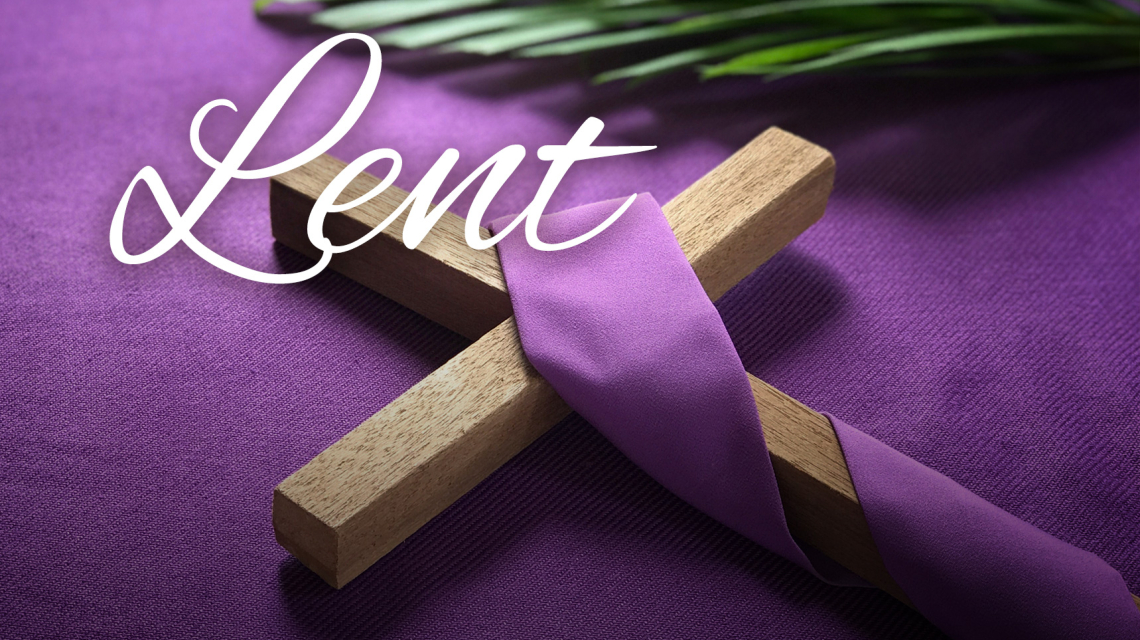The 40 Days of Lent

History of Lent
The Lenten season, preparation for Easter, has been observed from the onset of the Church, although there have been inconsistencies with duration and practices. The Council of Nicea, 325 A.D., established Easter’s fluid date as the Sunday following the first full moon of the vernal equinox. In 461 A.D., Pope St. Leo established the duration as 40 consecutive days before Easter. Pope Gregory the Great, in the sixth century, added the dispensing of ashes the preceding Wednesday (Ash Wednesday), making Lent 46 days. Sundays were considered feast days and not included in the count.
Initially, all forms of meat, fish, and animal products were excluded for the entirety of Lent. People were allowed one meal per day, after 3 p.m. In the 1400s, that time was revised to noon. Eventually, a small snack was included to sustain energy. Over time, fish, meat and eventually dairy products were allowed. However, fasting was required all 40 days. It wasn’t until 1966 that fast days were lessened to Ash Wednesday and Good Friday only.
Why do we have penitential seasons?
Jesus gave the example of a penitential retreat, spending prayerful time in the desert preparing for his ministry, reflecting on God’s will, and determining how he’d freely make that happen. Penitential seasons offer us this same opportunity: to withdraw from our routines and evaluate our spiritual progress or regression. We do this through reflection and repentance, which enable us to identify our weaknesses and make reparation to amend our sinful ways. Penitential seasons create time to reflect on our need to make God the focal point of our lives. The result can be spiritually rewarding.
What are the current rules for Lent?
All Catholics, ages 14 and up, are bound by the law of abstinence. Abstinence means refraining from the consumption of meat (land animals) on Ash Wednesday and all Fridays of Lent. Why Friday? To unite ourselves with Jesus’ sacrifice, made for us on Good Friday.
All Catholics, ages 18-59, are to fast on Ash Wednesday and Good Friday. Fasting is defined as eating one full, meatless meal on prescribed days. Bits of food can be taken at other traditional mealtimes though their combined total should not equal a full meal.
Penitential practices, like fasting and abstinence, are intended to refocus our thoughts and intentions toward God. Lent’s 40 days include Ash Wednesday to Holy Thursday (the Lenten fast continues until Holy Saturday), not including Sundays. Sundays are optional but encouraged. For health reasons, the infirm, ill, and pregnant or nursing mothers are exempt.
Three other Lenten disciplines are prayer (daily conversation with the Lord), fasting (from behaviors which detract from our relationship with God), and almsgiving (sharing our resources, ensuring the basic needs of human dignity).
Why purple?
Colors powerfully convey unspoken messages and evoke emotions. Scriptural accounts share Jesus was robed in purple to mock his implied royalty as king of the Jews. The pain of his passion and crucifixion became associated with this color. Purple reminds us Lenten days are times of repentance and atonement, of acknowledging how our selfish desires continue to suppress and crucify the goodness of God today.
Why don’t we sing the Gloria or say Alleluia during Lent?
The Gloria is a joyful hymn of praise thanking God and recognizing Jesus as the Lamb of God. The Alleluia is another exclamation of praise. While we literally know Jesus has risen and set us free, during Lent, we focus expectant anticipation of these events to come.
Lent is a time to revisit Old Testament events leading to Christ’s mission and humanities salvation. It’s a time of facing the human struggles impeding our own resurrection. Refraining from joyous hymns of exultation maintains
Lent’s penitential mood.
What is Laetare Sunday?
The Church builds in a break from our deep reflection and self-denial on the 4th Sunday, Laetare (meaning Rejoice) Sunday. A passage from Isaiah, “rejoice with joy, you that have been in sorrow” is read, rose vestments are worn, and flowers may appear. This day is a gift to take a short break and breath in so we can courageously resume our walk to Calvary.
What are the Scrutinies? Why do they have different readings?
The Scrutinies, celebrated on the third, fourth and fifth Sundays of Lent, are special rites for the Elect (those preparing for baptism at Easter Vigil) to deliver them from the power of sin, protect them against temptation, and strengthen them in Christ. These rites begin with the entire Eucharistic assembly silently praying for these intentions.
The particular readings correlate with the intended conversion experience of each scrutiny. The first scrutiny Gospel is the Samaritan woman (Christ is the living water), the second Gospel is the man born blind (Christ is the light of the world), and the third Gospel is the story of Lazarus (resurrection and life.)
Why 40 days?
The number 40 has ecclesial significance: Moses spent 40 days on Mt. Sinai before receiving the Ten Commandments; Jesus spent 40 days in prayer and fasting prior to beginning his ministry. So, too, we spend 40 days preparing.









